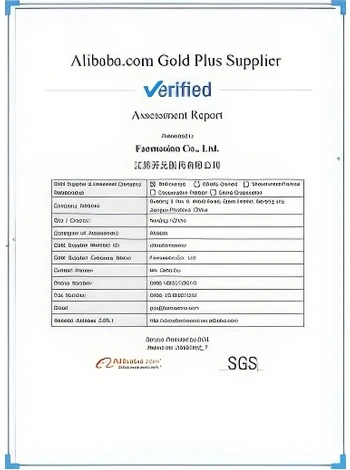



polyacrylamide solubility in water
Understanding the Solubility of Polyacrylamide in Water
Polyacrylamide (PAM) is a synthetic polymer formed from the polymerization of acrylamide monomers. Due to its versatile properties, it has found numerous applications across various fields, including agriculture, wastewater treatment, and pharmaceuticals. One of the crucial aspects of PAM's utility is its solubility in water, which significantly influences its effectiveness in different applications.
Polyacrylamide is known for its high solubility in water, making it an ideal candidate for various formulations. The solubility of PAM is primarily attributed to its hydrophilic nature, which arises from the presence of amide groups within the polymer chain. These amide groups can form hydrogen bonds with water molecules, facilitating the dissolution process. Moreover, the molecular weight of PAM can vary significantly, affecting its solubility. Generally, lower molecular weight PAMs tend to dissolve more readily in water compared to their higher molecular weight counterparts.
polyacrylamide solubility in water

In practical applications, different forms of PAM are employed depending on the desired solubility and functionality. For instance, anionic, cationic, and nonionic variants of PAM exist, each with distinct solubility characteristics. Anionic PAMs are often preferred in agricultural applications for soil conditioning and erosion control, as their solubility enables them to improve water retention in soil. On the other hand, cationic PAMs are more suitable for use in wastewater treatment, where their positive charge helps to flocculate suspended particles, aiding in their removal from water.
However, while polyacrylamide offers advantageous solubility, it is essential to handle it with care. In its raw form, acrylamide is classified as a potential neurotoxin and carcinogen, which raises concerns regarding its use. Consequently, regulations and safety protocols are critical during the synthesis and application of polyacrylamide to ensure safe handling and minimize exposure.
Overall, the solubility of polyacrylamide in water is a fundamental property that enhances its functionality across various domains. Its ability to dissolve in water enables its effective use in applications ranging from soil improvement to water purification. Understanding the factors that influence PAM's solubility can help researchers and practitioners optimize its use while ensuring safety and efficacy. This knowledge is crucial as the demand for effective water management solutions continues to grow in the face of global environmental challenges.
-
Anhydrous Formic Acid 80% 85% 94% - High Purity SolutionsNewsAug.30,2025
-
Accurate Fire Assay Flux for Gold & Silver Ore AnalysisNewsAug.29,2025
-
Advanced Paint Chem Solutions: Quality Chemicals for CoatingsNewsAug.28,2025
-
Potassium Nitrate: The Ultimate Fertilizer for Agriculture and GardeningNewsAug.25,2025
-
Potasium Persulphate: A Versatile Chemical for Industrial ApplicationsNewsAug.25,2025
-
Industrial Applications of Sodium HydroxideNewsAug.25,2025
-
Industrial & Household Uses of Sodium BisulfateNewsAug.25,2025










